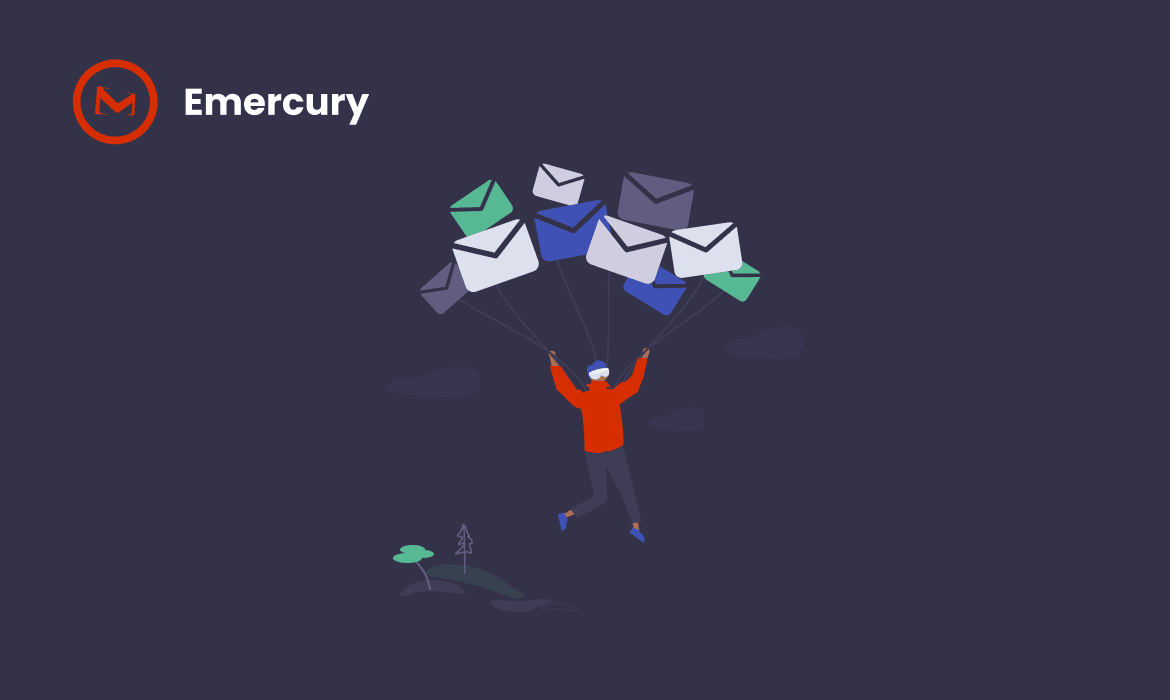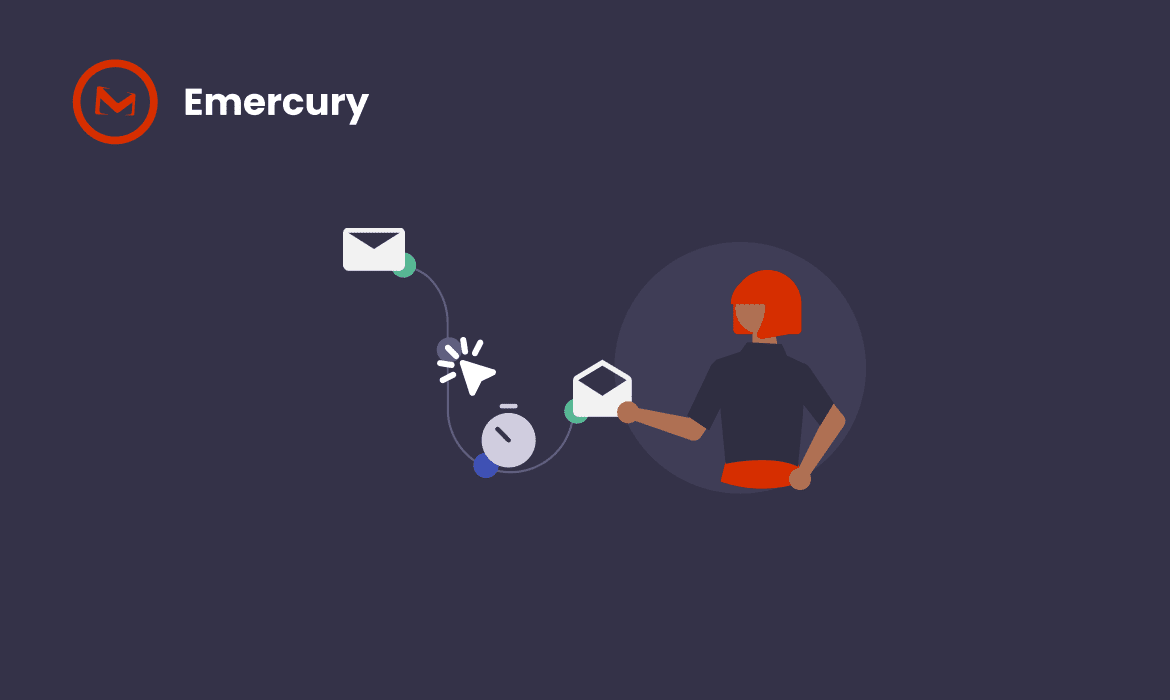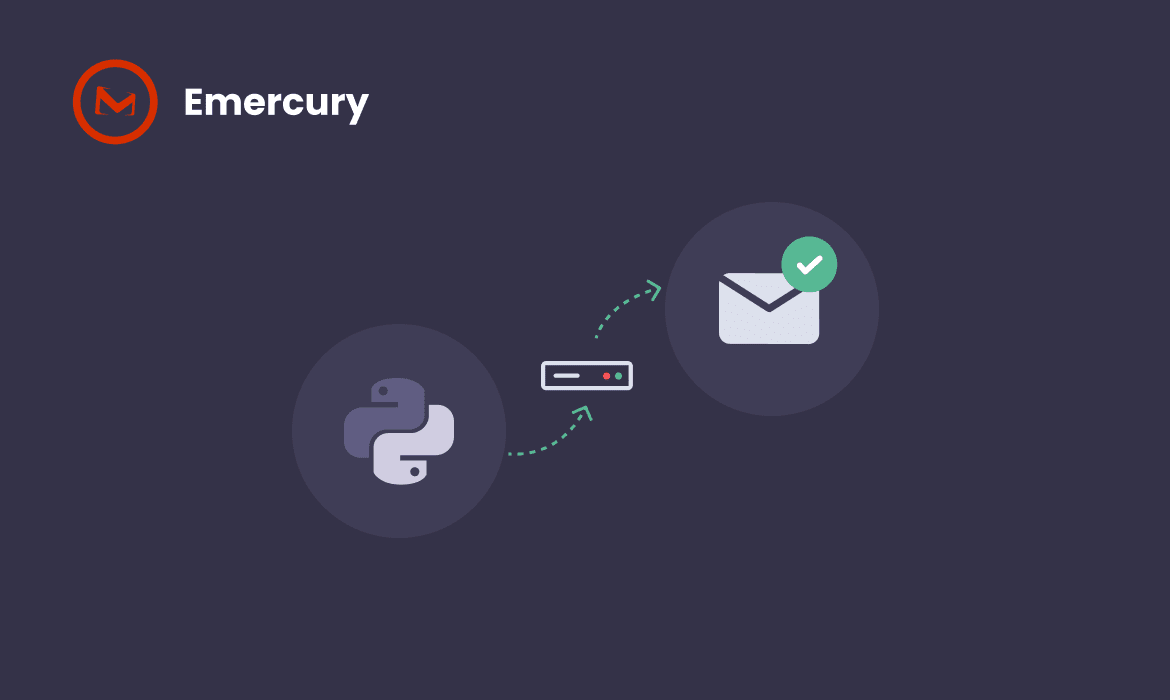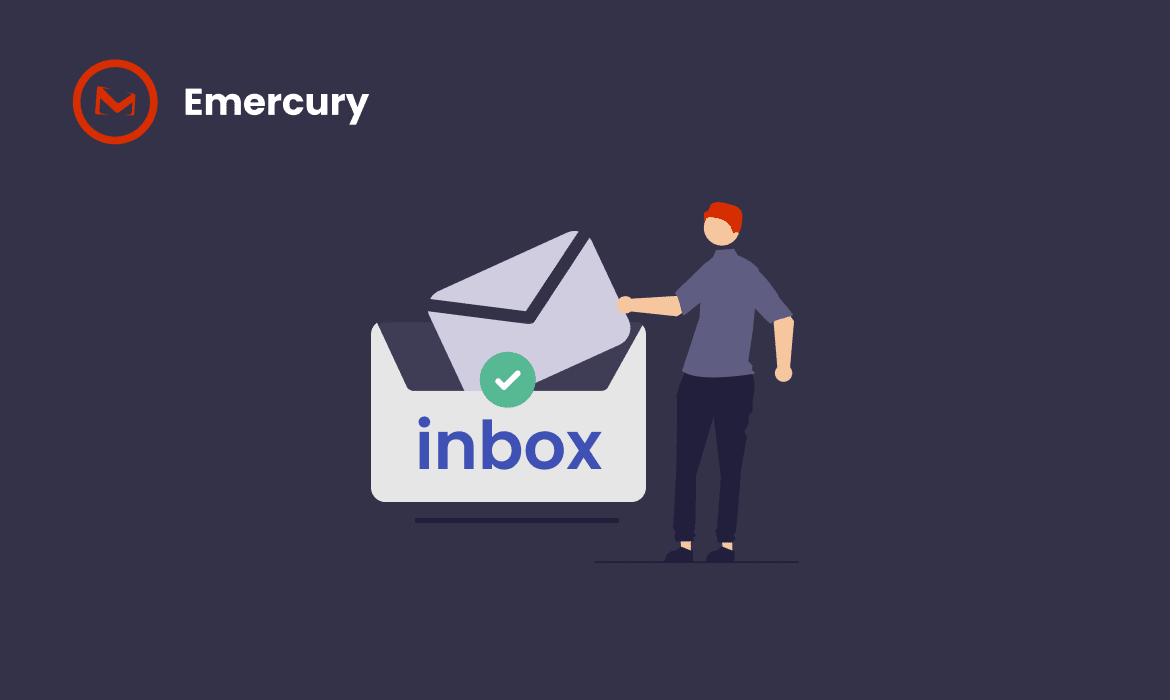WooCommerce email automation represents one of the most powerful tools in an online store owner’s arsenal. With over 4 million stores running on WooCommerce and nearly 4.89 billion email users worldwide, the potential reach is staggering. In fact, email marketing drives an impressive 4.24% of e-commerce conversions, outperforming both search and social media channels.

Implementing automated emails for your WooCommerce store isn’t just convenient—it’s essential for growth. Abandoned cart emails specifically have conversion rates three times higher than other WooCommerce automated emails. Additionally, personalized emails deliver six times higher transaction rates than generic messages, making proper email marketing for WooCommerce a revenue-generating necessity. With ecommerce email open rates increasing from 10.16% to 25.1% in 2023, there’s never been a better time to leverage these five crucial email campaigns for your store.
What is WooCommerce email automation?
At its core, WooCommerce email automation is a system that automatically sends targeted, personalized emails to your customers based on specific triggers such as purchases, abandoned carts, or other key shopping behaviors. Instead of manually crafting and sending individual emails to each customer, this powerful feature allows you to create pre-defined workflows that deliver the right message at precisely the right moment.
WooCommerce email automation functions as your tireless digital assistant, working 24/7 to nurture leads, engage customers, and drive sales while you focus on other aspects of your business. The beauty of this system lies in its ability to respond to customer actions in real-time, creating a seamless and personalized shopping experience.
How WooCommerce Email Automation Works
The mechanics behind WooCommerce email automation are remarkably straightforward yet incredibly powerful. The system operates on a trigger-action framework:
- Triggers – These are specific events or customer behaviors that initiate an automated email sequence. Common triggers include making a purchase, abandoning a cart, or subscribing to a newsletter.
- Rules – These define the conditions under which the triggered emails should be sent. Rules help you target specific customer segments with relevant messages.
- Actions – Once triggered and rules verified, the system executes predetermined actions—most commonly sending a personalized email, though some advanced systems can also update orders or perform other tasks.
This trigger-action framework forms the foundation of automated workflows that respond intelligently to customer behavior, delivering timely and relevant communications.
Default WooCommerce Automated Emails
Out of the box, WooCommerce comes with several built-in automated emails focused primarily on transactional communications. These include order confirmations, refund updates, and password resets. You can access and manage these default emails by navigating to WooCommerce > Settings > Emails in your WordPress dashboard.
While these default emails handle the essential transactional communications, they only scratch the surface of what’s possible with comprehensive WooCommerce email automation. For more advanced marketing capabilities, you’ll need to integrate with specialized email automation tools or extensions.
Beyond Basic Automation: Expanding Your Email Marketing Capabilities
To truly harness the power of WooCommerce email automation, most store owners integrate with dedicated email marketing platforms or install specialized WooCommerce extensions. These tools expand your capabilities beyond basic transactional emails, allowing you to create sophisticated marketing workflows.
With the right WooCommerce email automation solution, you can implement:
- Personalized Content – Tailor your messages with customer-specific information using merge tags for names, addresses, order details, and more.
- Conditional Content – Display different content to different customer segments within the same email. For example, offering a 10% discount to VIP customers and a 5% discount to regular customers.
- Advanced Segmentation – Create targeted campaigns based on purchase history, browsing behavior, engagement level, and other customer attributes.
- A/B Testing – Experiment with different email elements to determine what resonates best with your audience.
- Detailed Analytics – Track performance metrics like open rates, click-through rates, conversion rates, and revenue generated to optimize your campaigns.
Types of WooCommerce Automated Emails
The versatility of WooCommerce email automation allows you to create various types of email campaigns that engage customers throughout their journey with your store. Some of the most effective types include:
- Abandoned Cart Emails – Automatically sent to customers who add products to their cart but leave without completing the purchase
- Post-Purchase Follow-up Emails – Send thank you messages, care instructions, and related product recommendations after purchases
- Welcome Emails – Greet new subscribers or customers and introduce them to your brand
- Post-Purchase Follow-Ups – Thank customers for their purchase and gather feedback or reviews
- Re-engagement Campaigns – Win back inactive customers with special offers or updates
- Product Recommendation Emails – Suggest relevant products based on customers’ past purchases and browsing behavior
- Special Offers and Discounts – Promote sales, seasonal discounts, and limited-time offers
With Emercury’s WooCommerce integration, these automated emails create multiple touchpoints throughout the customer journey, nurturing relationships and driving repeat purchases with minimal manual intervention. The platform’s real-time data sync ensures your automation always works with the most current customer information.
Benefits of Implementing WooCommerce Email Automation
The strategic implementation of WooCommerce email automation delivers numerous advantages for online stores:
Time Efficiency – Once set up, your email marketing runs on autopilot, eliminating the need to manually create and send individual messages. This automation ensures consistent communication without consuming your valuable time.
Enhanced Customer Experience – Automated emails provide customers with timely information about their orders and interactions with your store, creating a more transparent and satisfying shopping experience.
Improved Communication – Transactional emails boast impressive open rates—order confirmation emails achieve a remarkable 65% open rate. This high engagement provides additional opportunities to communicate your brand values and promote related products.
Personalized Customer Journey – Today’s consumers expect personalized experiences. According to research, nearly 73% of surveyed consumers in 2022 expected businesses to understand their unique shopping requirements and behaviors. Email automation helps meet these expectations through targeted messaging.
Higher Conversion Rates – Timely, relevant emails sent at critical moments in the customer journey (like abandoned cart reminders) significantly increase the likelihood of converting potential customers into buyers.
Building Stronger Customer Relationships – Regular, meaningful communication builds trust and loyalty, transforming one-time buyers into repeat customers and brand advocates.
Choosing the Right WooCommerce Email Automation Solution
With these benefits in mind, selecting the right automation platform becomes crucial for success. Several options exist for implementing email automation with your WooCommerce store:
Native WooCommerce Extensions – Tools like AutomateWoo offer tight integration with your store and allow you to build workflows using different combinations of triggers, rules, and actions. These extensions often include preset workflows to help you get started quickly.
Third-Party Email Marketing Platforms – Services like Omnisend integrate with WooCommerce and provide comprehensive email marketing features, including automation, segmentation, and analytics.
All-in-One Marketing Automation Solutions – Platforms like FunnelKit Automations or Icegram’s Marketing Automation let you create, run, and monitor both transactional and marketing email campaigns directly from your WordPress dashboard.
Emercury’s WooCommerce integration provides the ease of use, comprehensive features, and scalability needed to grow your email marketing efforts alongside your business.
Compliance Considerations
While implementing WooCommerce email automation, it’s crucial to ensure your practices comply with relevant regulations like GDPR and CAN-SPAM. Emercury includes built-in compliance features such as double opt-in processes and easy unsubscribe options to ensure GDPR and CAN-SPAM compliance.
Remember that permission-based marketing not only keeps you legally compliant but also leads to higher engagement rates since you’re communicating with people who have explicitly expressed interest in your brand.
WooCommerce email automation transforms how you communicate with customers, allowing you to deliver personalized, timely messages that drive engagement and sales. By implementing the right automation strategy, you’ll create a more efficient marketing system that nurtures customer relationships at every stage of their journey with your store.
Why email automation matters for your WooCommerce store
Implementing WooCommerce email automation isn’t just a nice-to-have feature—it’s a strategic necessity for online stores looking to grow. Remember: email marketing delivers a staggering ROI of $45 for every $1 spent. This exceptional return makes it one of the most cost-effective marketing channels available to WooCommerce store owners.
Boosts customer engagement and retention
Customer retention is fundamental to long-term profitability. Consider this eye-opening statistic: 41% of online revenue comes from returning and repeat shoppers who represent only 8% of all visitors. Furthermore, retailers need to attract 7 customers in Europe and 5 in the US to equal the revenue of just one repeat shopper.
Personalization plays a crucial role in retention. Personalized emails achieve 29% higher open rates, dramatically improving engagement and encouraging customers to return. Moreover, 73% of surveyed consumers in 2022 expected businesses to understand their unique shopping requirements and behaviors, making personalized communication essential for meeting modern customer expectations.
Email automation helps create this personalized experience through:
- Welcome emails (achieving over 80% open rates—4x higher than standard emails)
- Post-purchase follow-ups with product care tips and review requests
- Re-engagement campaigns for inactive customers
- Anniversary or birthday emails with special offers
Essentially, automated emails keep your audience engaged with regular updates, product offers, and valuable information. This consistent communication builds the foundation for lasting customer relationships.
The data confirms this approach works: 75% of consumers appreciate receiving emails containing discounts and special offers. By delivering value consistently, you transform one-time buyers into loyal advocates for your brand.
Saves time with pre-built workflows
Running an online store demands constant attention to numerous tasks. Email automation liberates precious time by handling repetitive communications automatically. Once you set up your workflows, they operate continuously in the background while you focus on other aspects of growing your business.
Rather than spending hours manually crafting and sending individual emails to customers, pre-built automation workflows handle:
- Order confirmations and shipping notifications
- Abandoned cart reminders
- Welcome sequences for new subscribers
- Follow-up messages after purchases
- Re-engagement campaigns for inactive customers
The efficiency gains are substantial. Without automation, you would typically need to remind a customer 5-7 times before they make a repeat purchase—a practically impossible task to manage manually at scale.
Pre-built workflows eliminate this burden entirely. They ensure consistent communication without consuming your valuable time. These workflows respond intelligently to customer behavior, maintaining engagement throughout their journey with your store.
Practically speaking, Emercury’s WooCommerce integration combined with the visual journey builder allows you to automate both transactional and marketing emails seamlessly. The features inside allow you to set triggers, conditions, and actions that determine when and how your emails are sent. Once configured, they operate independently, freeing you to concentrate on product development, customer service, and strategic growth initiatives.
Improves conversion rates with timely messages
The right message at the right time can dramatically impact your bottom line. Email automation ensures your communications arrive precisely when they’ll have the maximum effect.
Abandoned cart emails showcase this power impressively. These automated reminders convert at a rate three times higher than other automated emails. With 60% of consumers influenced by marketing emails making purchases, these timely reminders represent a substantial revenue opportunity.
Targeted email campaigns deliver other impressive results:
- Personal recommendations can increase conversions by 80%
- Personalized emails deliver six times higher transaction rates than generic messages
- Marketing emails influence the purchase decisions of 60% of consumers, with over half purchasing from an email at least once monthly
The timing element is critical. Unlike manual campaigns, automated emails respond instantly to customer actions. When someone abandons their cart, browses a specific product category, or completes a purchase, your WooCommerce store can automatically send the perfect follow-up message.
This responsiveness creates natural conversion opportunities. Imagine a scenario where a customer adds a product to their cart but doesn’t complete the purchase. With email automation, you can automatically send them a reminder, potentially including a limited-time discount to encourage completion. This not only increases conversion chances but enhances the overall shopping experience.
The data confirms the effectiveness of this approach. Ecommerce email open rates increased from 10.16% to 25.1% in 2023, indicating growing consumer receptiveness to well-crafted email communications.
Maximizing customer lifetime value through automation
Beyond individual campaigns, WooCommerce email automation helps maximize the overall lifetime value of each customer. By maintaining consistent communication throughout the customer journey, you create multiple opportunities to increase average order value and purchase frequency.
This matters tremendously because acquiring new customers costs significantly more than retaining existing ones. Online stores face fierce competition because rivals aren’t down the road—they’re just a click away. Customer lifetime value (CLV) provides the most comprehensive measure of your retention efforts’ success.
Email automation directly impacts CLV by:
- Encouraging repeat purchases with personalized recommendations
- Offering loyalty rewards to high-value customers
- Re-engaging dormant customers before they permanently churn
- Educating customers about complementary products
The combined effect is powerful. A well-implemented email automation strategy continuously nurtures customer relationships, transforming one-time purchasers into loyal, repeat buyers who generate predictable revenue over time.
Analytics and optimization opportunities
Another major benefit of WooCommerce email automation is the wealth of performance data it generates. Every automated campaign provides actionable insights that help refine your marketing approach.
You can track crucial metrics like:
- Open rates to gage subject line effectiveness
- Click-through rates to measure content engagement
- Conversion rates to assess overall campaign performance
- Revenue generated to calculate precise ROI
These analytics enable continuous optimization. By monitoring key email performance metrics, you can identify what works and adapt your strategy accordingly. This data-driven approach ensures your email marketing becomes increasingly effective over time.
For instance, A/B testing different elements like subject lines and calls to action can significantly improve engagement. The resulting insights help you craft more compelling communications that resonate with your audience.
With 96% of top online retailers agreeing that email marketing delivers their best ROI, the optimization opportunities provided by automation represent a substantial competitive advantage.
5 WooCommerce email campaigns you should automate
Setting up the right WooCommerce email automation campaigns can dramatically improve your store’s performance with minimal ongoing effort. Let’s explore five essential email campaigns every store owner should implement to maximize conversions and customer lifetime value.
1. Abandoned cart recovery emails
Cart abandonment represents a massive opportunity for ecommerce stores, with over 70% of online shoppers abandoning their carts—worth a staggering $4 trillion in potential sales. Fortunately, with the right strategy, businesses can recover up to $260 billion in revenue from abandoned cart customers.
Abandoned cart emails are automatically triggered when a customer adds products to their cart but leaves without completing checkout. These timely reminders convert at a rate three times higher than other automated emails, making them exceptionally effective at reclaiming lost sales.
The first email in your abandoned cart sequence should go out within an hour after abandonment, followed by additional reminders over the next two to three days. This timing strikes the perfect balance—not too immediate that customers feel pressured, yet not so delayed that they forget their intended purchase.
What makes abandoned cart emails particularly powerful is their personalization capabilities. Including the specific items left in the cart, along with product images and descriptions, creates a more compelling reminder. Many successful campaigns also incorporate:
- A friendly, non-pushy reminder about the forgotten products
- High-quality images of the abandoned items
- A prominent “Return to Cart” button
- Optional incentives like time-limited discounts or free shipping
The top-performing abandoned cart flows see a 12% click rate and nearly 7% order rate, driving an average revenue of nearly $3 per recipient, with top brands generating over $27 per recipient.
2. Welcome emails for new customers
Welcome emails create crucial first impressions and boast remarkable engagement rates. These messages receive over 80% open rates—four times higher than standard marketing emails. They’re also extraordinarily effective at driving engagement, generating four times as many opens and ten times as many clicks compared to other email types.
A welcome email is the first message your customers receive after subscribing or making their first purchase. This initial communication sets the tone for your relationship and establishes expectations for future interactions.
Effective welcome emails typically include several key components:
- A warm, personalized greeting
- A brief introduction to your brand and values
- Clear explanation of what to expect from future communications
- Special offers or incentives for first purchases
- Guidance on next steps or getting started
The subject line deserves particular attention, as 64% of customers’ decisions to open an email are based on subject lines. Keep it brief, intriguing, and relevant to maximize open rates.
Personalization plays a vital role in welcome email effectiveness. Beyond addressing recipients by name, consider tailoring content based on how they joined your list—whether through a purchase, newsletter signup, or special promotion.
3. Post-purchase follow-up emails
After a customer completes a purchase, post-purchase follow-up emails help nurture the relationship and encourage future engagement. These messages show appreciation, provide additional value, and open doors for further sales opportunities.
Post-purchase emails serve multiple purposes:
- Expressing gratitude for the customer’s business
- Reiterating key product details and information
- Offering additional resources or support
- Promoting related products (cross-selling)
- Providing special discounts on future purchases
- Inviting customers to join loyalty programs
Timing matters tremendously for these communications. If your product typically takes ten days for delivery, scheduling follow-ups after seven days wouldn’t make sense since customers haven’t yet experienced your product. Instead, automate these emails to send approximately three days after the customer receives their purchase.
Segmentation enhances the effectiveness of post-purchase communications. A customer who has purchased from you multiple times requires different messaging than someone who just made their first purchase. Tailoring your approach based on purchase history creates more relevant and engaging communications.
Consequently, post-purchase emails present excellent opportunities for gathering valuable feedback. Asking customers about their experience not only makes them feel valued but provides insights to improve your products and marketing.
4. Win-back or re-engagement emails
Every store experiences customer churn, but win-back emails can successfully re-engage inactive customers. These campaigns target customers who haven’t interacted with your brand for an extended period, encouraging them to return and make additional purchases.
Win-back emails (also called re-engagement emails) aim to rekindle interest in your brand and prompt lapsed customers to return. These campaigns often include incentives like next-order coupons to motivate customers to shop again.
The economics behind win-back campaigns are compelling—it costs five times more to acquire a new customer than to retain an existing one. Even more remarkably, 45% of customers who receive well-crafted win-back emails will open your future communications.
Timing is critical for win-back campaigns. You should generally send your first re-engagement email after three months of inactivity, when customers are at risk of lapsing. After 6-9 months of inactivity, customers typically fully disengage, making recovery more challenging.
A comprehensive win-back email sequence typically includes five types of messages:
- A simple reminder of your existence
- An incentive offer (discount or special promotion)
- A request for feedback
- A last-chance communication
- A notification of unsubscription
Each email serves a distinct purpose in the re-engagement process, giving you multiple opportunities to reconnect with inactive customers through different approaches.
5. Product recommendation emails
Product recommendation emails suggest relevant items based on customers’ past purchases or shopping patterns. Unlike purely personalized emails, these communications aren’t limited to individual recommendations—they can include related products that might interest your customers based on their demonstrated preferences.
These emails function as your WooCommerce store’s product recommendation engine, helping customers discover new items they might not otherwise find. A properly created WooCommerce product recommendation email works automatically to increase your revenue without requiring additional effort.
The cross-selling potential of recommendation emails is substantial. For instance, you might connect an order for product A with recommendations for complementary product B, creating natural upselling opportunities. Advanced tools allow you to target specific categories rather than individual items, giving you flexibility in your recommendation strategy.
Timing these emails strategically enhances their effectiveness. Many stores send product recommendation emails approximately four weeks after the initial purchase—though the ideal timing varies based on your specific products and customer purchasing cycles.
With Emercury’s personalization features, you can include relevant product information in your emails such as:
- Product names and descriptions from abandoned carts
- Pricing information
- Purchase recommendations based on customer behavior
- Personalized content using merge tags
By transforming ordinary transactional emails into marketing opportunities, product recommendation emails drive additional sales and increase customer lifetime value. They represent an easy tactic to implement immediately to boost revenue.
Ultimately, these five WooCommerce email automation campaigns form the foundation of an effective email marketing strategy. By implementing them systematically, you’ll create multiple touchpoints throughout the customer journey that nurture relationships, recover lost sales, and drive repeat purchases—all while minimizing the manual effort required to maintain these communications.
How to set up WooCommerce automated emails with Emercury
Setting up WooCommerce email automation requires choosing the right platform for your needs. An effective solution should provide flexible, customizable workflows that adapt to your specific business requirements. Look for platforms that offer:
- Visual workflow builders
- Comprehensive integration with WooCommerce
- Advanced segmentation capabilities
- Detailed analytics and reporting
Emercury provides these capabilities with an “unopinionated” approach that gives store owners complete freedom to design email workflows.
Journey Builder
Emercury’s Journey Builder serves as the command center for creating sophisticated email automation workflows. To access this powerful tool, navigate to Campaigns from the main menu and select Email Automation, or launch it directly from your Dashboard. This intuitive visual editor allows you to craft personalized customer journeys without requiring technical expertise.
When creating a new automation workflow:
- Click “Create New Email Automation” to begin
- Name your automation workflow (something descriptive like “WooCommerce Abandoned Cart Emails”)
- Select your trigger type from options including:
- New Subscribers added to your list
- Existing List members
- Tag Match
- Field Match
For WooCommerce integrations, you’ll typically want to create a dedicated list—for example, “WooCommerce Abandoned Carts”—that serves as the foundation for your automation. Subsequently, this organization helps maintain clean segmentation between different types of customer communications.
After establishing your automation framework, the visual builder displays your entire workflow, allowing you to visualize the complete customer journey. Each component appears as a movable block that you can position, edit, or delete as needed.
Setting up triggers and actions
The heart of effective email marketing for WooCommerce lies in properly configured triggers and actions. Emercury employs a straightforward trigger-action framework where specific customer behaviors initiate predetermined responses.
Common triggers include:
- Abandoned shopping carts
- New account creation
- Product purchases
- Email opens or clicks
- Tag-based
For abandoned cart sequences, Emercury’s WooCommerce plugin automatically detects when customers leave items in their cart without completing checkout. The system then adds these customers to your designated list and makes their product data available to your automation workflow.
Once triggered, you can define various actions:
- Send a Message: Create emails with personalized content using merge tags like {products.1.product_name} to dynamically display abandoned cart items
- Wait: Program delays between messages (minutes, hours, days, weeks, or months)
- Conditions: Create branches in your workflow based on customer behavior (opened/clicked/not opened/not clicked)
- Move/Copy Emails: Transfer subscribers between lists based on their actions
- Apply Tags: Add or remove tags to further segment customers
- Check Field: Verify specific customer data fields
The visual workflow builder uses intuitive drag-and-drop functionality. Simply slide actions from the menu onto your workspace, then connect them to form complete sequences. This versatility enables you to create anything from simple welcome sequences to elaborate multi-step journeys with conditional branches based on customer behavior.
For maximum effectiveness with WooCommerce automated emails, consider implementing strategic timing. For instance, abandoned cart recovery performs best when structured as a sequence—sending the initial reminder within an hour, the second email at the 24-hour mark, and the final message after 48 hours.
When creating email content, Emercury provides a comprehensive HTML editor with personalization options. You can customize:
- Friendly names to identify messages in your workflow
- From names and multiple subject line variations
- Link tracking for measuring engagement
- Dynamic content based on customer data
The platform’s flexibility extends to coupon generation as well. You can customize coupon values and expiry dates, plus exclude specific products or categories from promotional offers.
Tracking performance with analytics
Measuring the impact of your WooCommerce email marketing automation efforts is straightforward with Emercury’s built-in analytics. The platform provides detailed insights into key performance metrics that help optimize your campaigns over time.
From your Emercury dashboard, you can monitor:
- Email open rates
- Click-through rates
- Email delivery rates
- List growth and engagement
- Campaign performance metrics
These analytics help identify which messages resonate with your audience and which need refinement. By consistently reviewing performance data, you can make informed decisions about subject lines, content, offers, and timing.
For abandoned cart campaigns specifically, you want to track metrics like recovery rate versus the average order value of recovered carts. These indicators help determine the effectiveness of your recovery strategy and calculate the direct revenue impact of your automation efforts.
For advanced users, Emercury works with tools like Google Analytics to attribute sales to specific email campaigns and measure ROI more precisely. This integration provides a holistic view of how your email automation contributes to overall store performance.
A/B testing functionality further enhances optimization capabilities. Test different elements of your emails—subject lines, layouts, or CTA buttons—to identify what resonates most with your audience. The system automatically tracks performance differences, making it easy to implement winning variations.
For WooCommerce store owners seeking comprehensive email marketing capabilities without coding expertise, Emercury provides an accessible yet powerful solution. The platform’s WooCommerce integration syncs customer data and purchase information automatically, enabling targeted campaigns, post-purchase follow-ups, abandoned cart recovery, and performance measurement.
Conclusion
Final thoughts on WooCommerce email marketing automation
Implementing the five essential WooCommerce email automation campaigns we’ve discussed will significantly transform your store’s performance. Abandoned cart recovery, welcome series, post-purchase follow-ups, win-back campaigns, and product recommendations work together to create a comprehensive customer communication strategy. Each campaign targets specific customer behaviors, maximizing engagement opportunities throughout the buyer journey.
The numbers clearly demonstrate why these automated campaigns deserve your attention. With email marketing delivering $45 for every $1 spent and abandoned cart emails converting at three times the rate of other automated messages, the potential impact on your bottom line is substantial. Additionally, personalized emails achieve 29% higher open rates while requiring minimal ongoing maintenance once set up.
Setting up these automated workflows might seem challenging at first, but platforms like Emercury make the process straightforward with visual builders and pre-built templates. You’ll quickly appreciate how these systems free up your time while consistently nurturing customer relationships.
FAQ
- What is WooCommerce email automation?
WooCommerce email automation is a trigger-based system that sends personalized messages—such as order updates or cart reminders—without manual effort. - Why is WooCommerce email automation important?
Automated emails drive 4.24 % of e-commerce conversions and save hours of manual work, making them vital for growth and customer satisfaction. - Which email campaigns should I automate first?
Abandoned-cart recovery, welcome series, post-purchase follow-ups, win-back sequences, and product-recommendation emails deliver the fastest ROI. - How do I set up abandoned-cart emails in WooCommerce?
Install a compatible plugin (e.g., Emercury), create a cart-abandonment trigger, design a three-email sequence, and schedule sends at 1 h, 24 h, and 48 h. - What tools enable WooCommerce email automation?
Options include native extensions like AutomateWoo or full platforms such as Emercury, Omnisend, and MailPoet for advanced workflows and analytics. - How does Emercury integrate with WooCommerce?
Emercury’s plugin syncs customer and order data from your WooCommerce store. You can then use Emercury’s drag-and-drop journey builder to create automated email workflows and personalize emails with customer and product information. - Are automated WooCommerce emails GDPR compliant?
Yes—provided you collect explicit consent, offer easy opt-outs, and store data securely. Emercury includes built-in GDPR tools such as double opt-in. - How often should automated emails be sent?
Transactional messages trigger instantly; marketing automations follow behavior. Limit nurture flows to one or two emails per week to avoid fatigue. - Can I personalize WooCommerce automated emails?
Absolutely. Use merge tags for names, order details, and product images, plus conditional content blocks for VIPs or first-time buyers. - How do I measure success of WooCommerce email automation?
Track opens, clicks, recovery or purchase rate, revenue per email, and customer-lifetime value. Refine workflows with A/B tests in Emercury.



